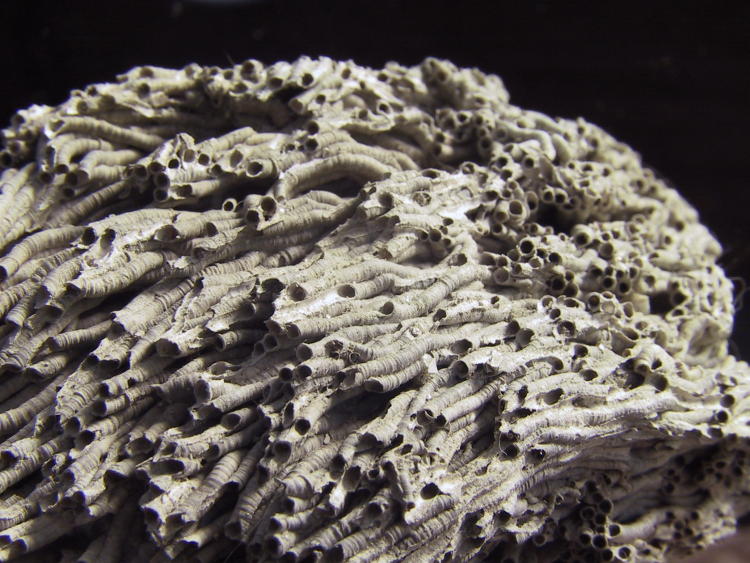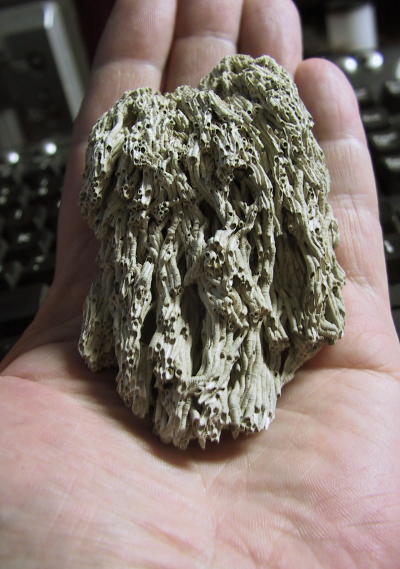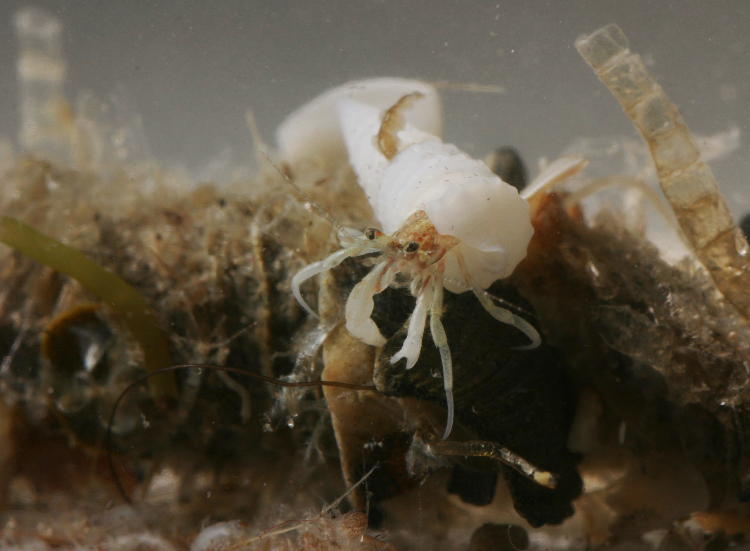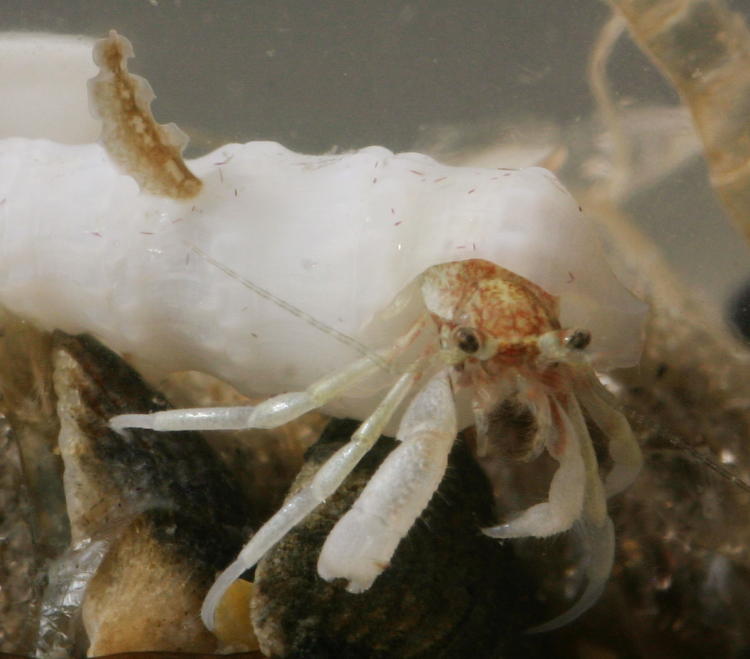It’s been a while since I featured something from Ze Frank (or is it zefrank?) and I’m happy to rectify that with this latest offering:
I was originally going to leave it at that and be happy, but two things intervened:
1) I haven’t been posting enough anyway;
2) I’ve had some images kicking around for years and have never written about them, even though I’ve been meaning to.
And so, reminded of this, I present a couple of organisms that may be related. Or may not.
When living in Florida, on one of the Atlantic beaches I noticed some odd rock formations. First off, this was notable because very little of the Atlantic seaboard shows any rock at all; it’s sand as far as you care to dig. But on closer inspection, it turns out it wasn’t actually rock anyway.

From the right angle, the myriad openings could be seen, revealing that the rocks were actually large colonies of some tubeworm or similar organisms, all aligned the same way. I imagine (because I honestly couldn’t tell you what the facts are) this was for two reasons: because building onto your neighbors’ structures was easier and sturdier than creating a freestanding one, and because one direction was optimum for feeding. These ‘rocks’ were pretty damn strong, able to be walked on, and close inspection showed them to be mostly sand cemented together. I never saw any indication of occupancy, so they might have been old and abandoned, but I also discovered them at low tide and it’s pretty likely that the occupants wouldn’t be seen until they were completely submerged at high tide anyway.

From other angles, the structures could be taken to be simply rougher rock or sand accretions, since the tubular shapes, made from sand and shell fragments, were hard to distinguish from any side that didn’t show the openings. Now, at this time I had been working on something to allow me to shoot macro photos underwater without submerging the camera (I might feature this later on,) but this project wasn’t completed yet and so I had no way of seeing what happened at high tide. And at no point since have I ever encountered anyone who could tell me more about what I found. But as you can likely surmise from the photos, there were perhaps hundreds of thousands of these unidentified critters living in these beachfront condos.
On another trip, I found something else washed up on shore, almost certainly long-abandoned, but much more distinctive in material and structure.

These tubes definitely appear to be calcium-based at least, and are quite tough for their thin structure. I took these to be a form of ‘feather duster,’ a common name for the Family Sabellidae of the polychaetes, because I’d seen something very similar before in a friend’s aquarium. However, those were individualistic, and only one species forms a tube from calcium carbonate and they’re off Australia. Not to mention that, had they possessed the fanlike appendages like those shown in the video, colonies this tightly-packed would have been actively interfering with one another constantly, so I doubt they were the same type of organism.
 This photo shows scale a little better, and I can simply tell you that the tube openings are right around 1mm in diameter because I still have this specimen – anyone that wants to see it in person should drop me an e-mail; I’ll tell you how to get here and we’ll make a party of it. Perhaps I’ll hold a contest to see who can guess closest to the actual number of tubes in this small specimen, the winner getting… ummmm… something appropriate, anyway. I’ll need to charge a decent entry fee to compensate me for counting all those motherfuckers. Maybe, if I get bored, I’ll saw one end off cleanly and make a really cool set of pan pipes from this cluster…
This photo shows scale a little better, and I can simply tell you that the tube openings are right around 1mm in diameter because I still have this specimen – anyone that wants to see it in person should drop me an e-mail; I’ll tell you how to get here and we’ll make a party of it. Perhaps I’ll hold a contest to see who can guess closest to the actual number of tubes in this small specimen, the winner getting… ummmm… something appropriate, anyway. I’ll need to charge a decent entry fee to compensate me for counting all those motherfuckers. Maybe, if I get bored, I’ll saw one end off cleanly and make a really cool set of pan pipes from this cluster…
And one more, because I’m on the subject and have the photos handy.
Several years ago during a beach trip, I collected a recently-washed-ashore cluster of weeds and debris, all tangled in fishing line, and with it came a handful of the tiniest hermit crabs that you’ve ever seen. This meant that I had to do a macro aquarium session.

What brings this into the same post is the very thing that the hermit crab is clambering upon, which is another tube of an unknown and unseen marine denizen; it’s so well camouflaged here that it’s hard to make out, but it’s laying horizontally and stretching across the frame (and well beyond.) This one was definitely very flexible, probably a little smaller in diameter than a pencil, and liberally festooned with dead vegetation and bits of shell – it seems likely this wasn’t a buried tube but existed above the sand surface, and could probably sway in the current. And this also gives you a good idea of how small the crab was; while we’re here, we’ll have a closer look.

Don’t ask me to try and identify this species, because I wouldn’t even know where to begin – it seems obvious this is a very young one and possibly bears few characteristics of an adult. But I am impressed that it can still find a cone shell to match – it seems these come in a huge variety of sizes too. And yes, there’s something attached to the crab’s shell and riding along, but I’m not trying to identify that either. It might be related to the little membranous thing that I video’d many years ago, but the shape is different, so all bets are off.
One of these days, I’ll come across some live specimens of such finds, in a manner where they can be photographed effectively, and do a follow-up post. This is naturally going to mean more beach trips but, you know, I’ll just have to make that sacrifice for my voluminous readership. You all mean that much to me.
















































